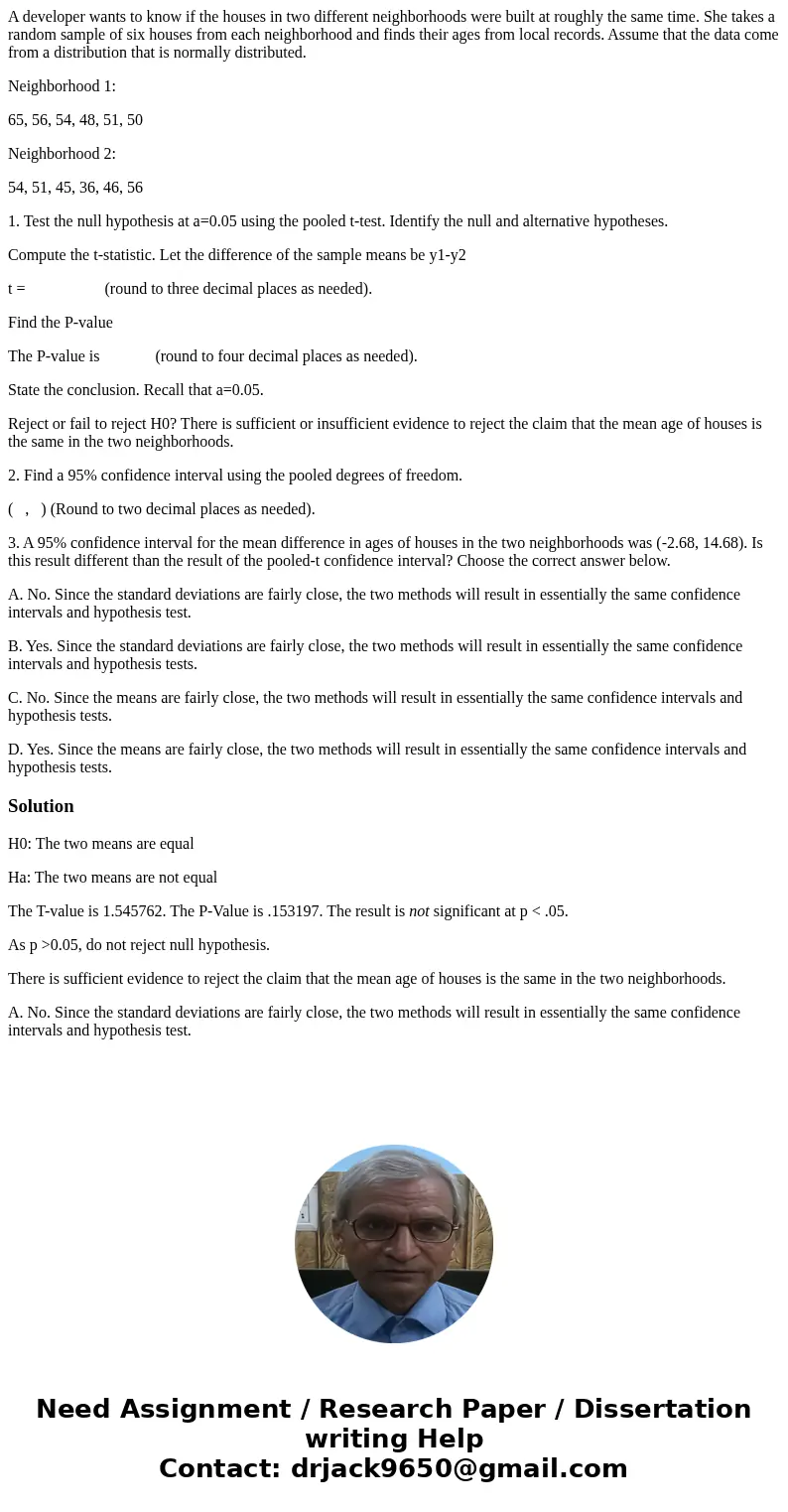A developer wants to know if the houses in two different nei
A developer wants to know if the houses in two different neighborhoods were built at roughly the same time. She takes a random sample of six houses from each neighborhood and finds their ages from local records. Assume that the data come from a distribution that is normally distributed.
Neighborhood 1:
65, 56, 54, 48, 51, 50
Neighborhood 2:
54, 51, 45, 36, 46, 56
1. Test the null hypothesis at a=0.05 using the pooled t-test. Identify the null and alternative hypotheses.
Compute the t-statistic. Let the difference of the sample means be y1-y2
t = (round to three decimal places as needed).
Find the P-value
The P-value is (round to four decimal places as needed).
State the conclusion. Recall that a=0.05.
Reject or fail to reject H0? There is sufficient or insufficient evidence to reject the claim that the mean age of houses is the same in the two neighborhoods.
2. Find a 95% confidence interval using the pooled degrees of freedom.
( , ) (Round to two decimal places as needed).
3. A 95% confidence interval for the mean difference in ages of houses in the two neighborhoods was (-2.68, 14.68). Is this result different than the result of the pooled-t confidence interval? Choose the correct answer below.
A. No. Since the standard deviations are fairly close, the two methods will result in essentially the same confidence intervals and hypothesis test.
B. Yes. Since the standard deviations are fairly close, the two methods will result in essentially the same confidence intervals and hypothesis tests.
C. No. Since the means are fairly close, the two methods will result in essentially the same confidence intervals and hypothesis tests.
D. Yes. Since the means are fairly close, the two methods will result in essentially the same confidence intervals and hypothesis tests.
Solution
H0: The two means are equal
Ha: The two means are not equal
The T-value is 1.545762. The P-Value is .153197. The result is not significant at p < .05.
As p >0.05, do not reject null hypothesis.
There is sufficient evidence to reject the claim that the mean age of houses is the same in the two neighborhoods.
A. No. Since the standard deviations are fairly close, the two methods will result in essentially the same confidence intervals and hypothesis test.

 Homework Sourse
Homework Sourse